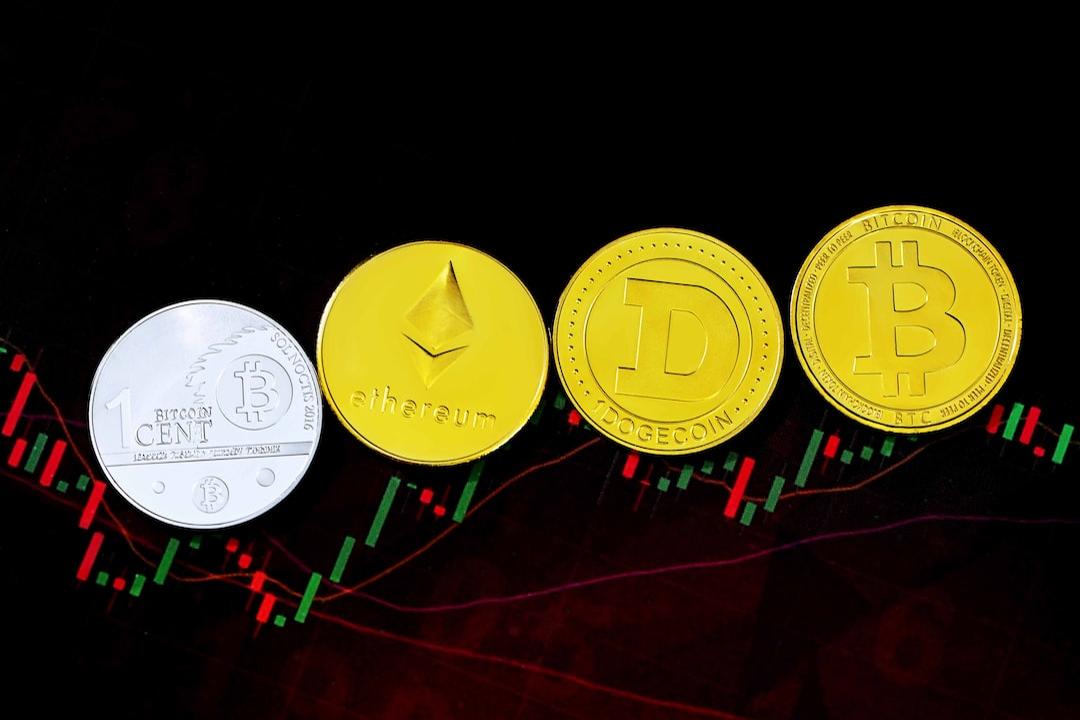CoinWorld reported:
Authors: Tricia Lin, Daniel Shapiro, Blockworks; Translation: Baishui
Abstract
The vast majority (69.2%) of surveyed respondents currently hold Ethereum (ETH), of which 78.8% are investment firms or asset management companies. This indicates that institutional participation in ETH staking has reached a critical point driven by revenue generation and network security contributions.
About 60.6% of respondents use third-party staking platforms, with a preference for large integrated platforms. These platforms alleviate challenges associated with individual staking, such as low capital efficiency and technical complexity.
Liquidity Staking Tokens (LST) have become popular due to their ability to improve capital efficiency, allowing staked ETH to remain liquid and available for DeFi strategies. 52.6% of respondents hold LST, and 75.7% are willing to stake ETH through decentralized protocols.
Distributed Validators (DVs) are gaining popularity among institutional participants due to enhanced security and fault tolerance. Over 61% of respondents are willing to pay additional fees for the security advantages provided by DVs.
Introduction
As the cryptocurrency industry continues to mature, staking has become a primary method for institutional investors to generate returns and contribute to network security. However, the staking landscape for institutional investors remains complex.
This research report provides a comprehensive analysis of staking behaviors among institutional token holders, with a particular focus on the Ethereum ecosystem. Our main research aims to reveal the current state of institutional staking, explore the motivations of market participants, and identify the obstacles they face. By collecting survey data from various institutional stakeholders, such as exchanges, custodians, investment firms, asset management companies, wallet providers, and banks, we seek to provide valuable insights into the distributed validator and multi-validator model market, enabling both new and seasoned participants to have a broader understanding of this rapidly evolving field.
The survey consisted of 58 questions covering various aspects of ETH staking, liquidity staking tokens (LST), and related topics. We used various question formats, including multiple choice, Likert scale, and open-ended questions, with the option to leave certain questions blank. Among the respondents:
The majority of respondents (69.2%) currently hold ETH.
The majority are institutional participants:
78.8% are investment firms or asset management companies.
Within this group, approximately 75% are companies or funds specialized in investing in crypto assets.
9.1% are custodians.
9.1% are exchanges or wallet providers.
12.1% are blockchain networks/protocols.
4.2% are market makers or trading firms.
0.8% are others.
People demonstrated a broad knowledge of stake economics, and they generally self-reported a high understanding of stake concepts and associated risks.
The geographical diversity of respondents and node operators’ locations was noted, although specific locations were not provided.
Current ETH Staking Landscape
Since the network upgraded to Proof of Stake (PoS), the staking landscape for ETH has undergone significant changes, including the activity known as “the Merge.” It is worth noting that over time, we have consistently seen an increasing number of validators and staked ETH. Currently, nearly 1.1 million on-chain validators have staked 34.8 million ETH.

After the merge, early ETH stakes were locked to ensure a smooth transition to PoS. It was not until the Shanghai and Capella upgrades in April 2023 (referred to as Shapella) that network participants could freely withdraw ETH. Following a brief initial withdrawal period, the network has seen a sustained positive net flow of staked ETH. This indicates strong demand for ETH staking.

Today, 28.9% of the total ETH supply is staked, creating a robust $115B+ staking ecosystem. This makes it the network with the highest staked amount and the largest growth potential.

As users pursue rewards related to network validation, the staking ecosystem continues to evolve. As explained in an earlier whitepaper titled “Internet Bonds” by Obol and Alluvial CEOs Collin Myers and Mara Schmiedt, the annualized real issuance yield is dynamic and decreases with more ETH staked.

Staking rewards generally hover around 3%, although validators can earn additional rewards in the form of priority transaction fees, which increase during periods of high network activity.
To earn these rewards, people can either stake ETH as individual validators or delegate their ETH to third-party staking providers.
Individual validators must deposit at least 32 ETH to participate in network validation. This number was chosen to balance security, decentralization, and network efficiency. Currently, about 18.7% of individuals in the network are individual stakers. Please note that unidentified stakers are assumed to be individual validators.


Motivations for individual staking have decreased over time for several reasons. Firstly, few people can afford 32 ETH and have the technical capabilities to run independent validators, limiting widespread individual participation in network validation.
Another key reason is the low capital efficiency of staked ETH. Once staked, ETH cannot be used for other financial activities within the entire DeFi ecosystem. This means individuals cannot provide liquidity to various DeFi primitives or use their ETH as collateral for loans. This presents an opportunity cost for individual stakers, who must also consider the dynamic network rewards rate for staked ETH to ensure they maximize their risk-adjusted earning potential.
These two issues have led to the rise of third-party staking platforms, which are mostly dominated by centralized exchanges and liquidity staking protocols.
Staking platforms provide ETH holders with the opportunity to delegate their ETH to other validators, who charge them fees for the staking service. While this requires trade-offs, it quickly became the preferred method for most network participants.

Surveyed respondents confirmed this:
69.2% of respondents stated that their companies currently hold ETH.
60.6% of respondents stated that they use third-party staking platforms.
48.6% prefer to stake ETH through an integrated platform (Coinbase, Binance, Kiln, etc.).

The main reasons cited by surveyed respondents for choosing a staking provider are as follows:
Reputation.
Supported network range.
Price.
Ease of onboarding/training.
Competitive costs.
Expertise and scalability.
Lastly, we asked respondents how their companies utilize LST.

Liquidity Staking Protocols
In recent years, the third-party staking platform market has experienced rapid growth to address the challenges posed by individual staking. This growth has largely been driven by the unlocking of liquidity staking technology.
Liquidity staking involves a smart contract-based protocol that receives ETH from users, stakes it on their behalf, and returns a liquidity staking token (LST) to users as a receipt for their staked ETH. LST represents the underlying asset (ETH) and is fungible, often autonomously earning staking rewards, providing users with an easy way to earn returns. Users can convert LST back to native ETH at any time, although there may be withdrawal delays due to the Ethereum PoS withdrawal restrictions implemented during the Cancun/Deneb upgrades. Liquid Collective provides extensive documentation on deposit and redemption buffers to ensure a seamless user experience.

Liquidity staking protocols typically consist of on-chain code and a decentralized set of professional validators, often selected through DAO governance. Validators can be selected based on various priorities, including technical proficiency, security practices, reputation, geographical diversity, or hardware diversity. Users’ ETH deposits are pooled and distributed among the validator set to minimize slashing risks and centralization.
Due to its popularity, many DeFi applications within the entire on-chain ecosystem have adopted liquidity staking tokens, further enhancing their utility and liquidity. For example, many decentralized exchanges (DEXs) have adopted LST, allowing holders to immediately access the liquidity of LST or exchange it for other tokens.
DEX integration is an important development due to withdrawal delays. While users can freely convert LST to ETH at any time, during periods of market pressure or high liquidity demand, the price of LST-ETH may deviate from the ETH price due to redemption queues. Users seeking immediate liquidity and willing to exchange LST for ETH at a discount on DEXs drive this discrepancy. As a result, withdrawal queues are usually low under steady-state conditions.
Once LST has significant liquidity, its price is expected to generally track with ETH, and it can be adopted by DeFi money markets, further enhancing its utility. Leading DeFi money markets, including Aave and Sky (formerly MakerDAO), have integrated LST, allowing users to borrow other assets without selling their staked ETH. This enables higher yields as users can compound Ethereum PoS rewards while earning additional returns from LST deployed in DeFi strategies.
Ultimately, LST improves the accessibility of ETH staking, maximizes capital efficiency, and enables new forms of revenue generation strategies.
Surveyed respondents expressed a favorable attitude towards LST.
52.6% of respondents hold LST.
75.7% are willing to stake ETH through decentralized protocols.
Lastly, we asked respondents how their companies utilize LST.

Advanced Staking Technologies
Distributed Validators (DVs)
While liquidity staking protocols have found a product-market fit for their current form, attracting retail investors, DeFi users, and crypto-native funds, they may need to implement Distributed Validators (DVs) to achieve significant institutional capital inflows.
DVs, pioneered by Obol, enhance the security, fault tolerance, and decentralization of staking networks. Obol seeks to address the inherent risks associated with centralized failure points in traditional staking setups. If a validator node goes offline, for example due to hardware failures or client errors, it will start to incur offline penalties. Additionally, there is a risk of validator keys being duplicated and running simultaneously on two nodes, leading to the risk of “double signing” transactions and substantial penalties. This poses significant risks for institutional participants as they seek maximum security and assurance around their delegated ETH stakes.
Single-node validators present various issues and risks:
Single-node validators lack protection against machine failures.
It is difficult to adopt an effective active-passive setup (used for redundancy). Configuration errors, software errors, or lack of monitoring can result in the same validator key simultaneously performing proofs, leading to slashing events.
Validator hotkeys may be compromised.
Validator infrastructure exhibits economies of scale, leading to client centralization and associated risks.
Obol’s Distributed Validators address these issues through trust-minimized staking with multiple-node validation. By dispersing the responsibilities of a validator into a cluster of nodes (known as a distributed validator), this setup ensures that the “individual” validator remains operational even if nodes in the distributed cluster fail. Specifically, as long as two-thirds of the nodes in the cluster are functioning properly, the validator will remain operational. DVs also allow for client software, hardware, and geographical diversity within the same validator, as each node can run a unique hardware and software stack. Both the individual validator and the larger network itself can achieve high levels of diversification across centralization vectors.

Surveyed respondents have a strong preference for DVs.
65.8% of respondents are familiar with DVs.
61.1% are willing to pay a premium for professional features such as enhanced security/uptime, decentralization, and fault tolerance.
Overall, there is a high level of awareness of DVs, with only 2.6% stating that they are not familiar with the technology.

0% of respondents believe that there is a high risk of liquidation in their DV operations, while 5.6% of respondents believe that there is no risk at all.

These responses reinforce the argument that institutional capital allocators favor DV as the best choice for collateral.
Re-staking
Similar to DV, re-staking is another key technique that allows stakers to create new income streams. Re-staking enables validators to use their staked ETH or LST to secure multiple protocols simultaneously, potentially earning additional rewards.
However, this is not without additional risks. Re-staking assets are used to secure multiple protocols, where a single malicious behavior or operational failure instance could result in significant penalties and losses for validators. Re-staking introduces other risks, including centralization of power, protocol-level vulnerabilities, and network instability.
EigenLayer has added support for Liquid Collectives LsETH. This will allow LsETH holders to earn protocol fees and rewards from the EigenLayer protocol, while also receiving ETH network rewards by holding LsETH.
Symbiotic has also added support for LsETH holders, who can now earn additional protocol fees and rewards from the Symbiotic protocol, while simply holding LsETH to receive ETH network rewards.
Survey respondents indicate a general preference for re-staking and have a deep understanding of the risks involved.
55.3% of respondents express interest in re-staking ETH.
74.4% of respondents state that they understand the risks of re-staking.
Nevertheless, respondents generally perceive re-staking as risky.
Our survey shows that 55.9% of respondents are interested in re-staking ETH, while 44.1% are not. Considering that 82.9% of respondents claim to understand the risks of re-staking, this indicates a favorable trend towards re-staking. However, the distribution slightly leans towards perceiving re-staking as inherently risky.

Decentralization and Network Health
Due to various factors creating strong network effects, LST exhibits winner-takes-all market characteristics. With the development of LST, they offer better liquidity, lower fees, and more integration with DeFi protocols. This increasing adoption leads to deeper liquidity pools, making the token more attractive for trading and usage in other DeFi applications. Over 40% of ETH is staked by Lido and Coinbase.

Large-scale LST can also benefit from better branding, as it is an important factor mentioned by survey respondents.

The survey further confirms the concentration of third-party staking platforms, with over half of respondents holding stETH.

This dynamic leads to the concentration of staking power in the hands of a few LST or centralized exchanges, where in some cases, large staking pools often rely on a limited number of node operators. This centralization not only goes against the core principles of Ethereum but also introduces security vulnerabilities to the network’s consensus mechanism and censorship attack vectors.
The majority of survey respondents express concerns about centralization, with 78.4% expressing worries about validator centralization and a general belief that the geographical location of node operators is important when choosing third-party staking platforms. The survey suggests that the market may be looking for more decentralized alternatives to replace current market leaders.

Custody and Operational Practices
The majority of respondents (60%) use qualified custodians to hold their ETH. Hardware wallets are also popular, with 50% of respondents using them. Centralized exchanges (23.33%) and software wallets (20%) are less commonly used for custody purposes.
Respondents generally indicate a high level of familiarity with node operations, with a majority (65.8%) agreeing or strongly agreeing that they are familiar with node operations, 13% remaining neutral, and 21% disagreeing or strongly disagreeing.
There is a high awareness of client diversity, where individuals use different software implementations to run Ethereum validators for minimizing single points of failure, maintaining decentralization, and optimizing overall network performance. 50% of respondents indicate familiarity with this concept, with 31.6% strongly agreeing. Only 2.6% are unfamiliar with client diversity. Overall, this suggests that 81.58% of respondents are familiar with the concept of client diversity.
Respondents place high importance on gaining liquidity. The average rating for the importance of liquidity, on a scale of 1-10 (with 10 being the most important), is 8.5, second only to protecting assets from losses (9.4): clearly, liquidity is a key factor for many institutional participants in the ETH staking ecosystem. Additionally, 67% of respondents state that all available sources of liquidity are important when considering LST, with a strong preference for decentralized exchanges such as Curve, Uniswap, Balancer, and PancakeSwap, as well as DEX aggregators (Matcha) or on-chain swapping platforms (Curve, Uniswap, Cowswap).

Finally, respondents display a moderate to high level of confidence in their ability to withdraw staked ETH during market fluctuations, with a majority (60.5%) expressing confidence in their ability to withdraw staked ETH during volatile periods, while a significant proportion (21.1%) express some level of concern. These confidence levels indicate that while most individuals feel secure in their ability to access their funds, a significant portion still have reservations about the security of the withdrawal process during turbulent market conditions.

Risk Management and Security
Institutions face various risks when staking Ethereum:
Slashing:
Slashing events can occur when there is a faulty proof or incorrect block proposal or double signing. As a result, validators may lose a portion of their staked ETH due to violations of protocol rules, and staking institutions may suffer significant financial losses. Penalties also occur for validator downtime or inactivity. While slashing is an irreversible consequence of malicious behavior, downtime penalties are typically smaller and recoverable.
Liquidity:
Institutions may have difficulty quickly exiting large positions if their staked ETH is locked or if there is a lack of deep liquidity in LST. Additionally, decoupling of market rates between ETH and LST can result in losses. 71.9% of respondents express concerns about liquidity from all available sources.
Regulatory Uncertainty:
Given the evolving global regulatory environment, institutions should monitor regulatory authorities’ ongoing developments regarding the classification of staking rewards, compliance requirements for running validator infrastructure, and tax implications of staking income. Due to regulatory ambiguity, over half (58.9%) of respondents would stake their ETH without hesitation, while 17.7% remain cautious.

Similarly, due to regulatory uncertainty, 55.9% of individuals are not participating in liquidity staking protocols, while 20% are undecided.

Overall, 39.4% of respondents believe that regulations will influence their choice of ETH staking providers, with 24.3% strongly agreeing that regulations will not be a factor in their choice of ETH staking providers. Given the ongoing developments in staking regulations, these institutions may prioritize other operational risks they consider more important.

Operationality: Over 90% of respondents are very/fairly familiar or somewhat familiar with the ETH staking withdrawal process, highlighting the awareness that a delayed withdrawal process can result in significant discrepancies in LST pricing. However, our respondents again show diverging levels of confidence in their ability to withdraw staked ETH during unstable staking conditions, with an almost equal split between confidence, neutrality, and lack of confidence.
As our survey demonstrates, running validator infrastructure at scale requires the smooth operation and performance of multiple validators, protection of private keys, and patching software vulnerabilities. Operational challenges remain the top concern for our respondents, with various metrics used to monitor staking activities, primarily annualized return rate and validator uptime, followed by total rewards earned, slashing rate, and liquidity.

Internal monitoring tools generated by proprietary risk management systems, reports and dashboards provided by staking providers, and Dune are the most cited tools used by surveyed institutions to monitor staking operations.

Furthermore, respondents differentiate between achieving above-average staking returns and the importance of achieving above-average staking returns. It serves as a benchmark for them.
There is still a divergence among respondents in deciding whether to participate in LST, with 44.4% mentioning regulatory and compliance issues.

Several asset management firms mentioned that holding LST poses a challenge, with an imbalance between risks and efforts for risk awareness and return. One respondent mentioned, “We hold PoS tokens but not mature. We don’t know where to start addressing/thinking about staking, yield, etc. Our team is small. We would like to do it in an approved way by the regulatory agency and limit risks.” Another respondent states, “LST is not staking. They are DeFi imposters.”
It is worth noting that banks mentioned in our survey that staking ETH held by their clients would impact disclosures to customers and regulatory bodies, and pose new requirements for capital impact and operational risks arising from LST liquidity or lack thereof.
Key Trends and Insights
We have noticed several key points from the overall results of the survey. Our data emphasizes the importance of liquidity and regulatory clarity in shaping institutional participation in ETH staking, with a fair level of caution maintained. Overall, the survey results of this report showcase the complex yet promising prospects of institutional ETH staking growth as companies continue to navigate evolving market conditions:
Institutions are actively engaging in ETH staking, but the level and methods of participation vary.
Despite associated risks, there is a growing interest in advanced staking techniques such as DV and re-staking.
Decentralization remains an important issue, influencing provider choices.
Liquidity is a critical factor for institutional stakers, affecting their choices of LST and staking methods.
Regulatory uncertainties lead to different attitudes, with some institutions acting cautiously while others are less concerned.
Institutional participants demonstrate a high level of awareness of operational aspects and risks related to staking.
Despite the risks and challenges associated with Ethereum staking, LST, and re-staking, these technologies offer compelling opportunities for institutional investors due to the potential for generating returns: Ethereum staking provides relatively stable and predictable returns compared to traditional markets. Income investments typically offer lower returns. Currently, ETH staking annualized reward rates are close to 3-4%, and participants can also earn additional rewards through priority fees. Additionally, LST can enhance capital efficiency by allowing staked ETH to be used in DeFi applications, enabling institutions to earn staking rewards while leveraging their assets for additional income opportunities.
Overall, the increasing popularity of LST in DeFi protocols creates new market opportunities. As 39.3% of respondents discuss their usage of LST in DeFi applications, this trend is likely to continue, potentially leading to increased liquidity and utility of these tokens. Furthermore, despite regulatory concerns, individuals seem to be growing more comfortable with the regulatory environment surrounding staking.
Finally, participation in staking aligns institutional investors with the long-term success of the Ethereum network, potentially providing financial returns and strategic positioning within the blockchain ecosystem. While challenges remain, the potential benefits of staking, LST, and re-staking seem to outweigh the risks for many institutions. With the maturation of the ecosystem and a significant increase in the percentage of ETH staked, these technologies may become increasingly attractive components of institutional crypto strategies.


